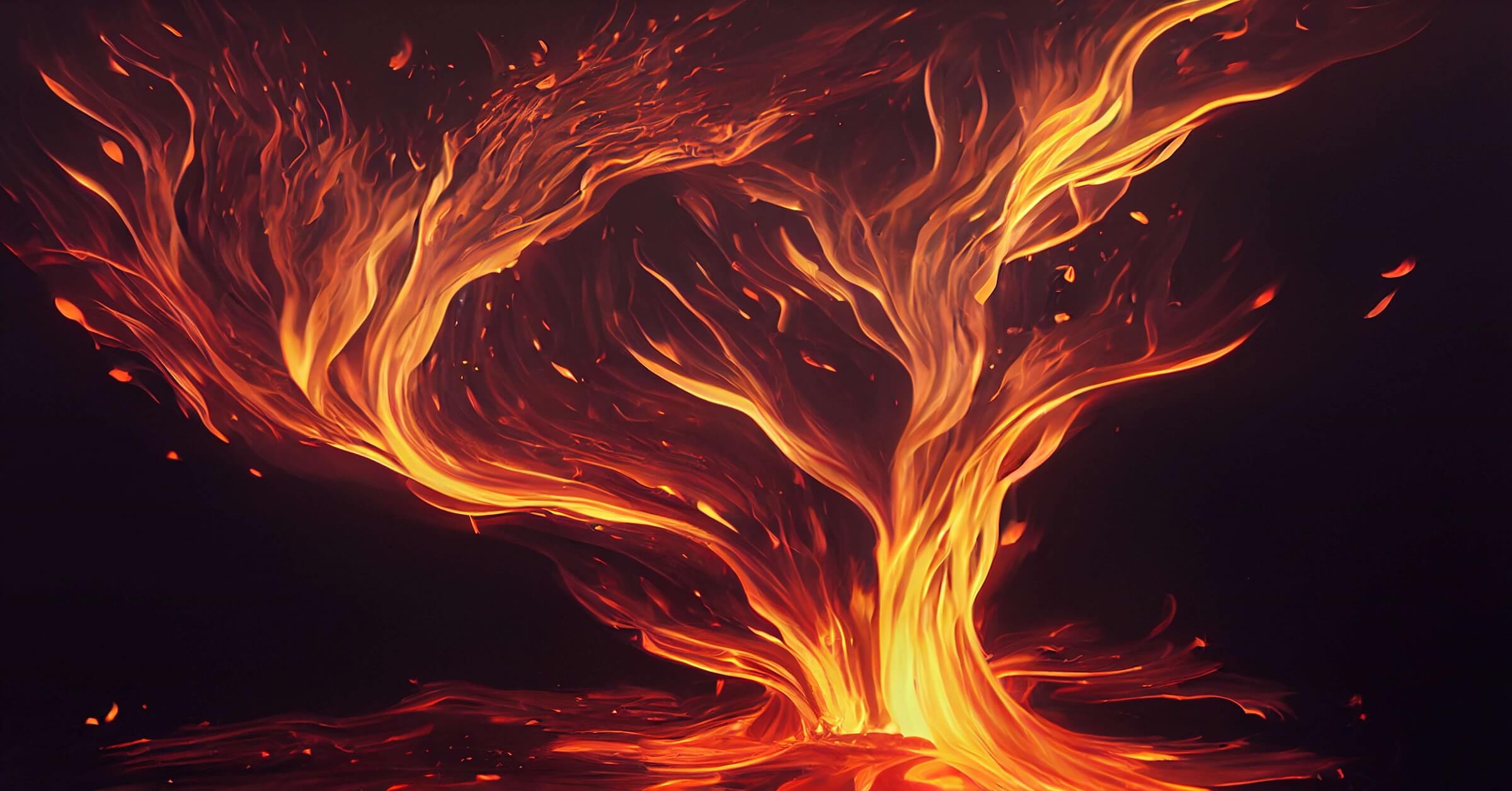
Fire is a chemical reaction and a rapid combustion process that occurs when a fuel source combines with oxygen and heat, emitting light, heat, and various gases. It is a fundamental example of an exothermic oxidation reaction. Fire is a dynamic process that releases energy through heat and light as the bonds within the fuel molecules break and recombine with oxygen molecules from the surrounding air.
The fire triangle is the components required for a fire to ignite and sustain:

The fire triangle simplifies the three essential components needed for a fire to start and maintain itself: fuel, oxygen, and heat. These factors interact to create and sustain fires. Here’s a brief explanation of each component:
Fuel: This material undergoes combustion and can be solid, liquid, or gas. Examples include wood, paper, gasoline, propane, and natural gas.
Oxygen: Air supplies the oxygen necessary for combustion’s chemical reactions to occur, known as “oxidation.”
Heat: A heat source raises the fuel’s temperature to its ignition point, initiating combustion. This point varies based on the fuel type.
A self-sustaining chain reaction occurs when these three elements come together in the right proportions. Subsequently, the heat generated by the initial combustion raises the temperature of nearby fuel, causing it to release volatile gases that further support the fire. As a result, the emitted heat and light manifest the energy released during this chemical reaction.
It’s important to note that fire safety involves understanding and controlling these three elements. Removing any one of them can extinguish a fire. For instance, using a fire extinguisher reduces the oxygen available to the fire, while water cools down the fuel and lowers its temperature.
Fire is crucial for human civilisation, providing warmth, light, and energy. However, uncontrolled fires can be extremely dangerous and destructive, posing risks to life, property, and the environment. Understanding the science behind the fire is essential for managing its benefits while mitigating its potential hazards.
Types of Fire:
The Singapore Civil Defense Force (SCDF) categories fires into different classes based on the burning materials. The classification follows a system similar to many other countries, including the United States. The different types of fire are classified using letters (A, B, C, D, and F), each representing a specific type of material. Here’s the breakdown:
Class A Fire: These are fires involving ordinary combustible materials. Wood, paper, cloth, rubber, and plastics are such materials. Water or water-based extinguishing agents are typically used to control and extinguish Class A fires.
Class B Fire: This class includes fires fueled by flammable liquids and gases. Such fuels include gasoline, oil, paints, solvents, and propane. Foam, dry chemical powders, and carbon dioxide often suppress Class B fires.
Class C Fire: The energized electrical equipment fires will fall under Class C. It’s important to note that the primary concern is not the burning of the electrical equipment itself but the potential for electric shock or electrocution if water-based extinguishing agents are used. Dry chemical powders and carbon dioxide are suitable for Class C fires.
Class D Fire: Class D fires involve combustible metals like magnesium, titanium, and sodium. These fires are extremely dangerous and require specialized extinguishing agents. Dry powder agents specifically designed for the metal involved fire.
Class F Fire: This class is specific to fires involving cooking oils and fats, often found in kitchens. Transitioning to Class F fires, they can be particularly difficult to extinguish using traditional methods, as water can spread the burning oil. Therefore, wet chemical extinguishers are commonly used for Class F fires.
Some countries might have variations in their fire classification systems, but the basics remain similar across international standards. If you’re looking for the most up-to-date information on fire classification in Singapore, we recommend consulting with authentic sources such as GreenTech Fire and Safety Pte Ltd.
